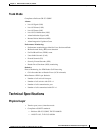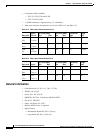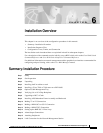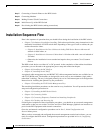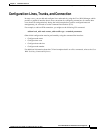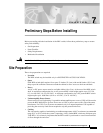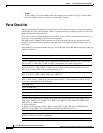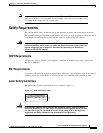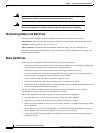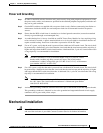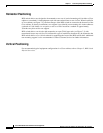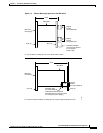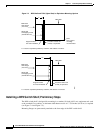
CHAPTER
7-1
Cisco BPX 8600 Series Installation and Configuration
Release 9.3.10, Part Number 78-11603-01 Rev. D0, July 2001
7
Preliminary Steps Before Installing
Before proceeding with the installation of the BPX switch, follow these preliminary steps to ensure
safety and reliability:
• Site Preparation
• Parts Checklist
• Safety Requirements
• Mechanical Installation
Warning
Installation should be performed by authorized personnel only.
Site Preparation
These site preparations are required.
• Location
The BPX switch may be installed only in a RESTRICTED ACCESS LOCATION.
• Space
Each BPX switch shelf requires floor space 22 inches (55.9 cm) wide and 80 inches (203.2 cm)
deep to provide sufficient clearance around the cabinet to allow access to the front and back.
• Power
An AC or DC power source must be available within 6 feet (2 m.) of the rear of the BPX switch
shelf. A maximum configuration for an AC-powered BPX switch might require up to 2333 VA
(13 A at 180 VAC, 10 A at 230 VAC). A maximum configuration for a DC powered BPX switch
might require up to 1680 Watts (40 A at –42 VDC, 35 A at -48 VDC).
• Uninterruptible Power Source
Please consult Cisco Engineering if a portable uninterruptible power source (UPS) will be used to
power the BPX 8600 Series System. Do not use an UPS or power source with a Ferro-Resonant
transformer. For UPS, Cisco Systems recommends only low output impedance UPS capable of
providing the necessary fault current required to trip the protection devices.
• Cooling
The site must be capable of maintaining an ambient temperature of 40°C maximum (recommended
range 20°Cto30°C) while the system is operating. A fully loaded BPX switch may dissipate up to
7200 BTUs. It is extremely important that the BPX switch is positioned to assure an unrestricted
air flow through the enclosure.



